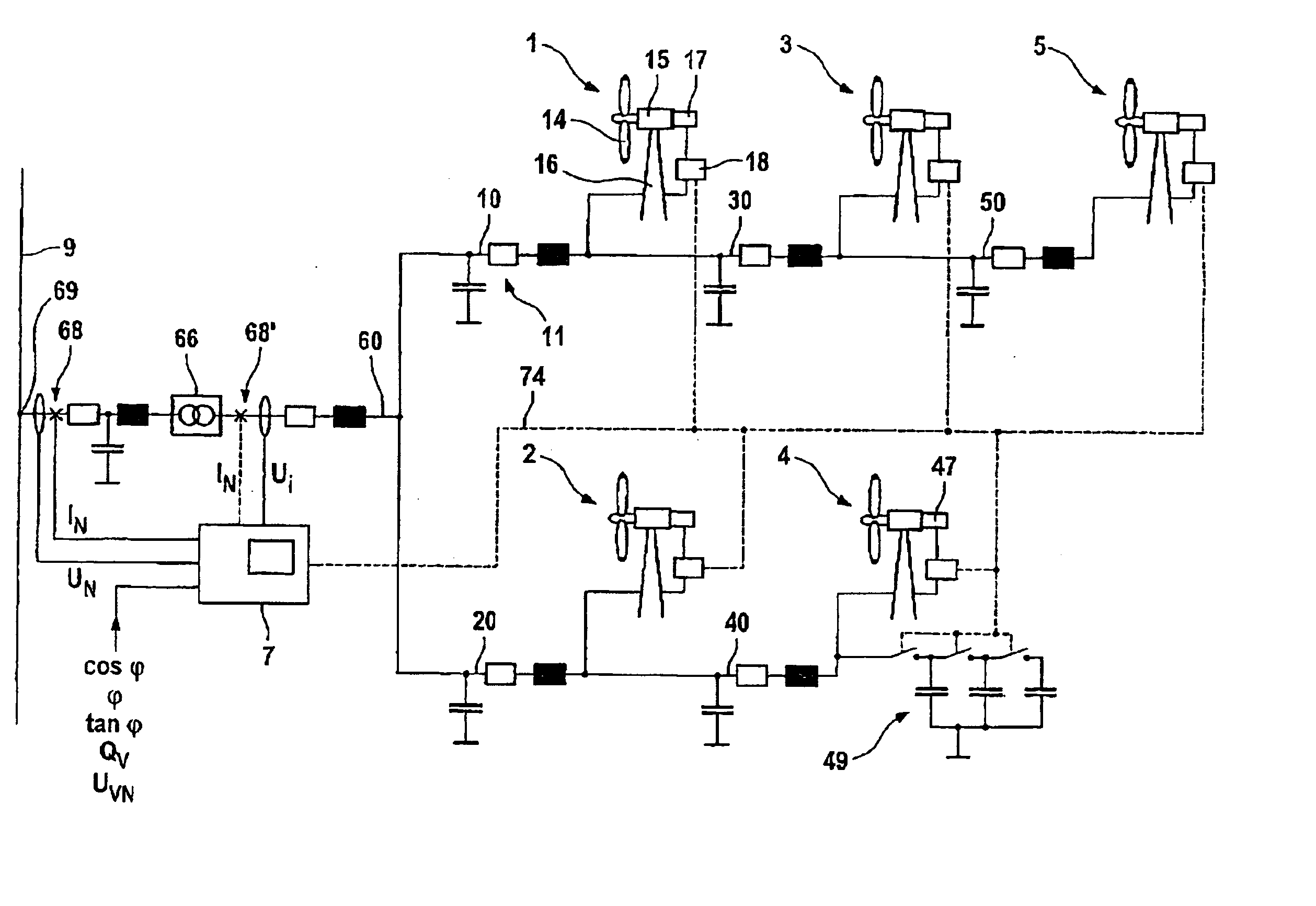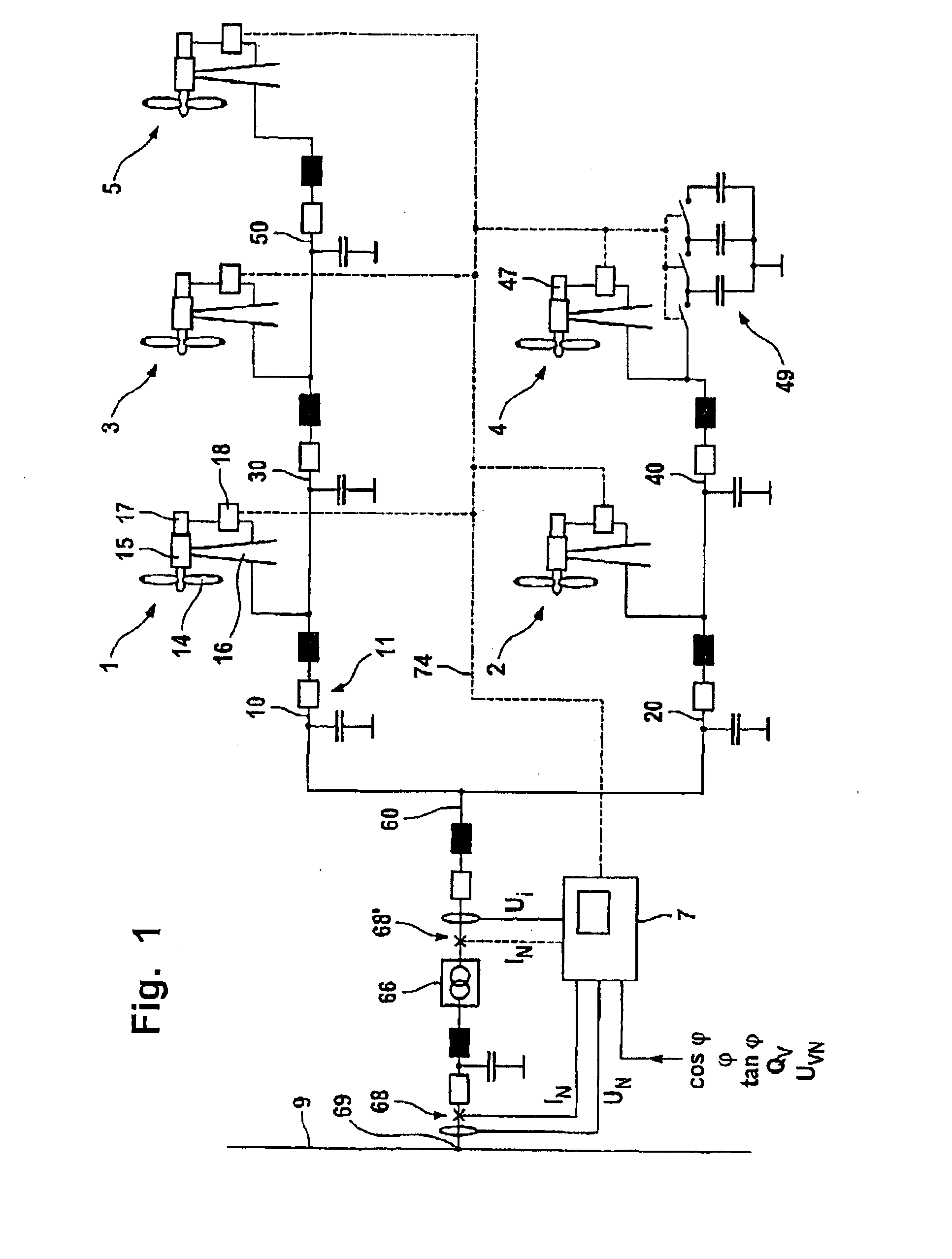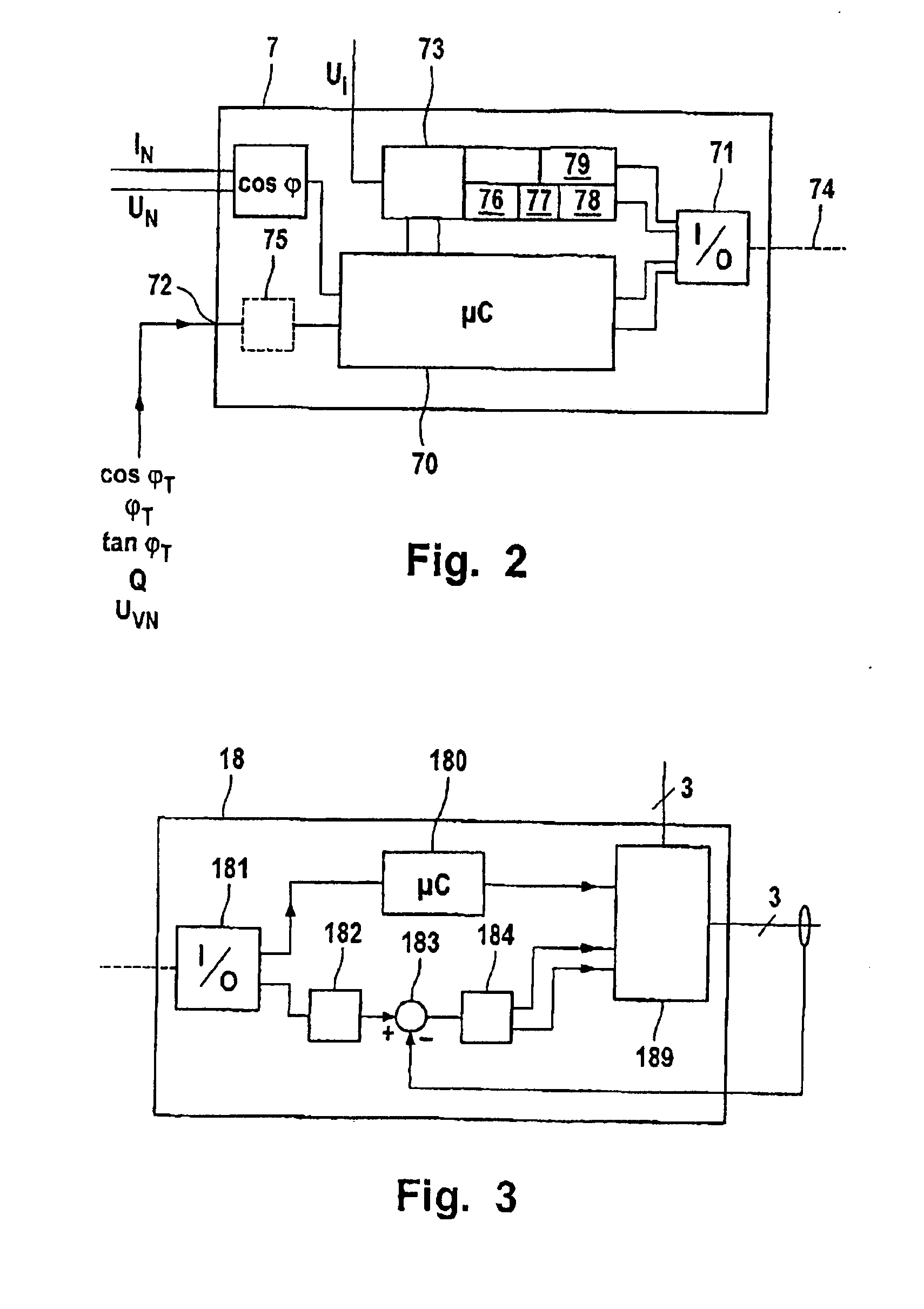Wind Park with Robust Reactive Power Adjustment System and Method for the Operation Thereof
a reactive power adjustment and wind park technology, applied in the field of windparks, can solve the problems of inability to adjust the voltage and current of the lines and transformers in the windpark, the inability to control the voltage and current of the windpark, and the inability to disconnect individual wind energy installations, etc., to achieve robust windpark operational response, reduce the effect of power consumption
- Summary
- Abstract
- Description
- Claims
- Application Information
AI Technical Summary
Benefits of technology
Problems solved by technology
Method used
Image
Examples
Embodiment Construction
[0034]FIG. 1 illustrates one exemplary embodiment of a windpark according to the invention, which has a total of five wind energy installations (1-5) and one central host computer (parkmaster) 7 in the illustrated exemplary embodiment. The wind energy installations 1-5 are connected to one end of a main line 60 via connecting lines 10, 20, 30, 40, 50.
[0035] The design of the wind energy installations 1-5 will be explained using the wind energy installation 1 as an example. The wind energy installation 1 has a rotor 14 which is arranged on a machine housing 15 at the top of a tower 16 such that it can rotate. The rotor 14 drives a generator (not illustrated). This is preferably a double-fed asynchronous generator, although other types are also possible. The generator is connected to a converter 17, which converts the electrical power produced by the generator to three-phase electrical power at a fixed frequency (network frequency). The operation of the wind energy installation 1 is ...
PUM
 Login to View More
Login to View More Abstract
Description
Claims
Application Information
 Login to View More
Login to View More - R&D
- Intellectual Property
- Life Sciences
- Materials
- Tech Scout
- Unparalleled Data Quality
- Higher Quality Content
- 60% Fewer Hallucinations
Browse by: Latest US Patents, China's latest patents, Technical Efficacy Thesaurus, Application Domain, Technology Topic, Popular Technical Reports.
© 2025 PatSnap. All rights reserved.Legal|Privacy policy|Modern Slavery Act Transparency Statement|Sitemap|About US| Contact US: help@patsnap.com



